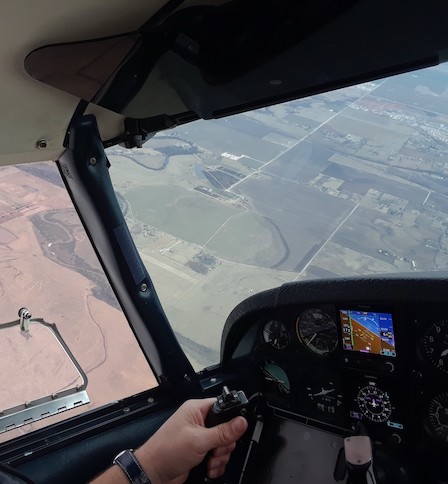Podcast: Play in new window | Download
Subscribe: RSS
 We are told to trust our instruments but many times our body tells us we are descending and turning when in reality we are flying straight and level. It takes discipline to trust our instruments and also vow to never fly into IFR conditions if we are not instrument current and competent. Today we discuss how to prevent and how to mitigate spatial disorientation.
We are told to trust our instruments but many times our body tells us we are descending and turning when in reality we are flying straight and level. It takes discipline to trust our instruments and also vow to never fly into IFR conditions if we are not instrument current and competent. Today we discuss how to prevent and how to mitigate spatial disorientation.
“The majority of weather accidents were VFR flights into IMC. Additionally, this category had the largest number of fatal accidents and the highest lethality rate.” – Nall Report 2018
Preflight Checklist:
Sponsor: AviationCareersPodcast.com – Scholarships, Career Coaching, and Interview Preparation.
News And Announcements:
Sun N Fun APRIL 2-7, 2019
Florida Pilot Conference Facebook Info
Tickets for Florida Pilot Conference: May 4th, 2019
In a past episode we briefly discussed basic med and there where a few questions regarding Basic Med. AOPA has a great resource online for basic med. You can find it at AOPA and searching on basic med or simply click on the link here in the show notes:
https://www.aopa.org/advocacy/pilots/medical/fit-to-fly-pilots
Cruise Flight (Spatial Disorientation):
What Is Spatial Disorientation – Spatial disorientation specifically refers to the lack of orientation with regard to the position, attitude, or movement of the airplane in space.
Systems in our body – Vestibular, Somatosensory , Visual.
Why VMC to IMC is usually fatal:
During flight in visual meteorological conditions (VMC), the eyes are the major orientation source and usually prevail over false sensations from other sensory systems
Experiences with spatial disorientation caused by flying.
When these visual cues are removed, as they are in instrument meteorological conditions (IMC), false sensations can cause a pilot to quickly become disoriented.
“Unless a pilot has many hours of training in instrument flight, flight should be avoided in reduced visibility or at night when the horizon is not visible.” – PHAK
“Illusions rank among the most common factors cited as contributing to fatal aviation accidents.” – PHAKT
Systems our body uses to orient our body
- Vestibular
- Somatosensory
- Visual
Types of spatial disorientation.
- The Leans
- Coriolis Illusion
- Graveyard Spiral
- Somatogravic Illusion
- Inversion Illusion
- Elevator Illusion
Visual Illusions
- False Horizon
- Autokinesis
- Black Hole effect
Prevention.
Mitigation.
Training.
Staying proficient not just current.
After Landing Checklist:
Picks Of The Week:
Carl – FAA Spatial Disorientation and Aerospace Medicine Reference Collection
Russ – Skyfaring: A Journey with a Pilot by Mark Vanhoenacker
Tom – Cirus Approach Learning Catalog
Rick – Fly8MA Episode on Spatial Disorientation
Larry – Cloud Topper pilot sight level
Links Mentioned In The Podcast:
Bold Method blog on Spatial Disorientation
FAA Pilot’s Handbook of Aeronautical Knowledge
Photo Credit: Russ Roslewski
